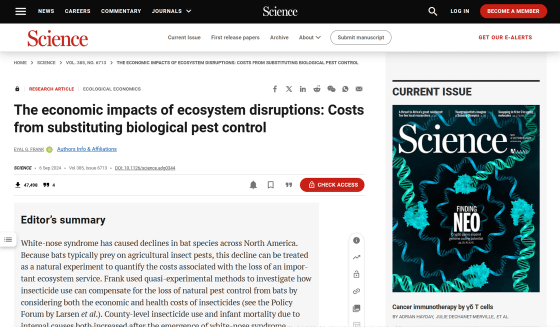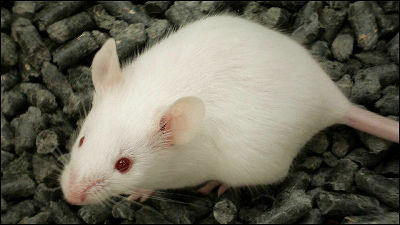Why did 'mass bat deaths' cause the rise in infant mortality in the US?

In North America, a deadly fungal infection known
The economic impacts of ecosystem disruptions: Costs from substituting biological pest control | Science
https://www.science.org/doi/10.1126/science.adg0344

The Collapse of Bat Populations led to More than a Thousand Infant Deaths | EPIC
https://epic.uchicago.edu/news/the-collapse-of-bat-populations-led-to-more-than-a-thousand-infant-deaths/
Mass Die-Off in Bats Across US Linked to Over 1,000 Human Infant Deaths : ScienceAlert
https://www.sciencealert.com/mass-die-off-in-bats-across-us-linked-to-over-1000-human-infant-deaths
White-nose syndrome is a deadly disease caused by a cold-loving fungus called Pseudogymnoascus destructans that grows around the mouth, nose, and ears of bats. It was first discovered in a cave in New York State in 2006 and has since caused mass deaths of bats across the United States.
Bats are beneficial to farmers because they are insectivorous, helping to keep crop-damaging insect populations in check, but the mortality rate in colonies affected by white-nose syndrome has reached more than 70%, making bats less effective pest control in many areas.
Farmers are being forced to use more pesticides to combat pests that bats no longer control, and ecological economist Eyal Frank of the University of Chicago has looked into how increased pesticide use due to mass bat deaths is linked to infant mortality.

Frank first looked at how pesticide use changed in counties that had experienced mass bat die-offs due to white-nose syndrome compared to counties that had not, and found that counties affected by mass bat die-offs experienced a 31% increase in pesticide use and a nearly 29% decrease in crop sales revenues.
Additionally, counties with confirmed bat mortality rates had a 7.9% increase in infant mortality, excluding deaths due to external causes such as accidents and homicides, which equates to an additional 1,334 infant deaths per county, or a 0.25% increase in infant mortality for every 1% increase in pesticide use.
'Bats have gained a bad reputation as scary, especially after reports that they may be linked to the origins of COVID-19. But bats provide value to society through their role as natural pesticides, and this study shows that declines in bat populations could be harmful to humans,' Frank said.
In addition, when combined with lost revenue and the cost of pesticides, farmers in communities that experienced mass bat deaths lost $26.9 billion between 2006 and 2017. If you add $12.4 billion in damages from increased infant mortality to this, Frank estimates that the total social loss will reach $39.6 billion.

'The costs to society of removing bats from insect control would be very large, but the costs of protecting bat populations would probably be much smaller,' Frank said. 'More broadly, this study shows that wildlife adds value to society, and we need to better understand that value to inform policies to protect wildlife.'
Related Posts:







